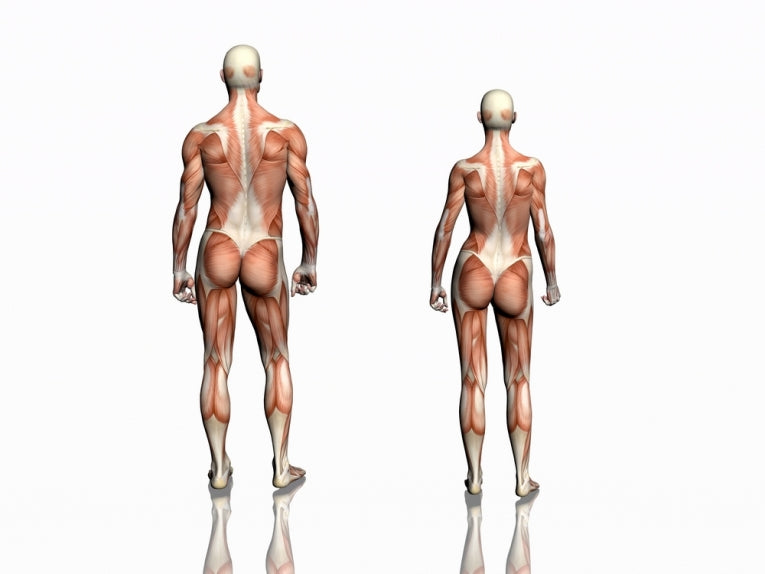Our genes wander. Most spend half their time in women and half in men. The pressure they come under is huge. Selection for the opposite sex means neither can reach perfection, but the evidence in humans is to date, inconclusive. However human height, weight, blood pressure and glucose, total cholesterol, and age have now been seen as sexually selected in an antagonistic fashion. The main author here, Professor Stephen Stearns, is able to say, "The genders would look different if there were no sexually antagonistic effects - they would diverge in appearance more easily because they would be unconstrained."
Stephen C. Stearns, Diddahally R. Govindaraju, Douglas Ewbank and Sean G. Byars of the Universities of Yale, Harvard, Pennsylvania( all in the US) and Copenhagen (Denmark) produced a paper in the Proceedings of the Royal Society B: Biological Sciences today to show up these constraints on the human phenotype. Sexually antagonistic trait selection or a correlation for negative fitness between males and females has been demonstrated plentifully in plants as well as animals.
The evidence for human genetic constraints is shown in their paper for a contemporary human population (The Framingham Heart Study patients, from Massachusetts, since 1948) for the first time. Evolution and natural selection show interesting intensities of selection in people's complex pedigrees. We still evolve it seems, but in this case, by compromise, so that the two genders look different.
The patients, predominantly of European ancestry, nay, often Irish (40%) we should mention, were all measured by doctors biennially, between the ages of 20 and 60. Variables such as country of birth, smoking habits, education and diabetes were taken into consideration, then the sexual dimorphism levels were estimated. The seven characteristics chosen all displayed dimorphism, with shorter, lighter females, having higher cholesterol, but lower blood sugar and blood pressure. Women also had their first child at a younger age. To test the strength and direction of sexual selection, the magnitude of selection gradients and the direction they took were measured.
How significant should the results be? Well, if completed family size measure's a sort of, "evolutionary fitness," in humans, females were selected for increased weight, and decreased height, blood sugar, total cholesterol and systolic blood pressure whereas males had weaker effects in exactly the same directions. In contrast more highly educated men had more children while more highly educated women had fewer. Because the Framingham Study had multiple generations and a large sample of more than 14,500 people, these results provided ample evidence on some characteristics, but missed out obvious possibilities such as hip size. The existing human sexual dimorphism proves that modifier genes and other mechanisms already operate to make sure that the antagonistic actions of one set of genes don't upset the applecart in the generations following.
In the short term, a Finnish study found that early first birth in both sexes was favoured for a pre-industrial society, although for women, this selection was most intense. Recent US studies show that both sexes are equally affected nowadays, although this Framingham study showed slightly more intensity of selection for men. For those intrigued by this, male wealth proved weaker at selecting family size in industrial society while there was evidence it was much stronger in polygamous subsistence-level society.
The pattern of selection was noticeably different between male and female. Your height is obviously important, guys, as it appeared the most sexually dimorphic characteristic. Women were strongly selected for shortness with I'm sure, hotly disputed fitness advantages. Workers have already suggested that women became shorter as a response to the selective advantage of giving birth earlier and therefore maturing earlier. We know that men continue growing for much longer. The trade-off was height for earlier reproduction. Possibilities include fitting in more children to your reproductive life and reducing death risks in childbirth (simply by being younger?)
In early societies, taller women could have had lower child mortality, it seems. They were certainly taller in hunter gatherer communities as they matured later, thereby gaining height! With the recently reduced child mortality, reproduction is now dominated by fertility. The "shorties" seem to win now, and this could even have directly affected men's maturation. Slightly less worrisome natural selection is working too. Men seem to be benefitting by inheriting the genes from women who are being selected for less total cholesterol. Heart disease was naturally the concern of the original study, so these traits are obviously more easily noticed than many that are yet to be investigated..










